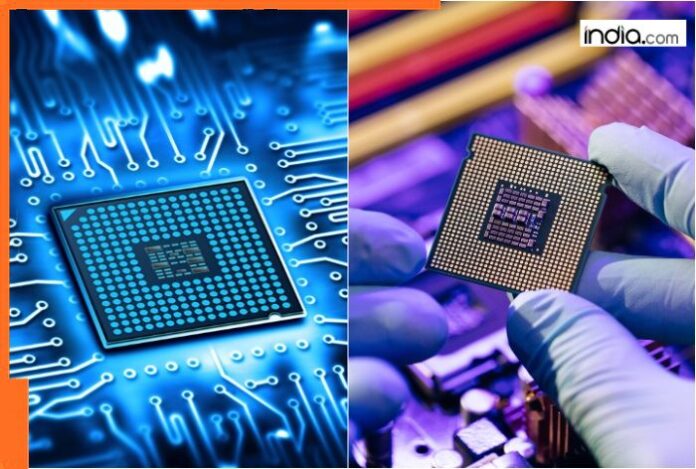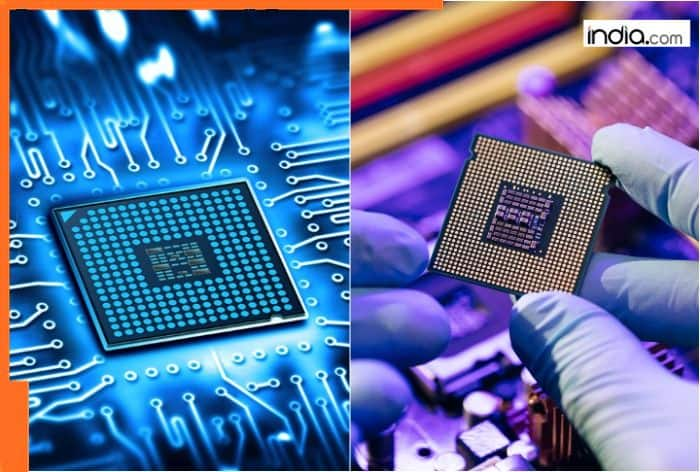
Semiconductors are essentially the brains of modern electronics. Integrated Circuits (ICs) and microchips that power electronic equipment are made from pure silicon or compounds like germanium or gallium arsenide.

From mobile phones, computers, medical equipment, and even cars and airplanes, almost every gadget in our modern world is powered by tiny microchips called semiconductors. But what exactly are these miniature miracle that are even used in machines that protect our borders? Let us find out.
What are semiconductors?
For all practical purposes, semiconductors are essentially the brains of modern electronics. Integrated Circuits (ICs) and microchips that power electronic equipment are made from pure silicon or compounds like germanium or gallium arsenide, and small amounts of impurities are added to these elements to enhance the conductivity of the material.
Rare gases such as neon gas are used during the manufacturing process of semiconductors, most of which are imported from Ukraine and Russia.
How semiconductors work?
Semiconductors, mainly made out of germanium and gallium arsenide, works on a simple principle of stopping or allowing the free flow of current. A semiconductor chip either allows electricity or stops it completely, allowing the device or its processes to shut off or power on, as an when required.
A semiconductor’s conductivity increases or decreases with temperature, acting alternatively as insulator and conductor. Mohamed Atalla, an Egyptian-American engineer and physicist, a semiconductor pioneer, was the one who suggested using silicon to make microchips.
How semiconductors are made?
The process of making semiconductors is very complex, first, silicon is extracted from sand for wafer fabrication during which wafers are made from this rare earth element. Semiconductors are made in a series of nanofabrication processes performed on the surface of substrates, commonly known as wafers, made from pure single crystal silicon.
In the second stage, the pattern is imprinted on these wafers, and then comes the process of deposition, etching and packaging. The entire process of semiconductor manufacture is very delicate, demanding extreme precision and skill.
‘New oil’
Dubbed as the ‘new oil’ of the 21st century, semiconductor microchips are used in almost every electronic gadget in artificial intelligence (AI), transportation, healthcare, military systems, and communications, among others.
The IC or integrated circuit is arguably the most essential component of any modern electronic device but despite the world’s most traded product, IC chips account for only 4% of global trade, with Taiwan (Chinese Taipei), China, South Korea, Malaysia, Singapore and the United States being the largest exporters.
China, Hong Kong, Singapore, Taiwan and South Korea, are the largest importers of ICs.
US leads global microchip market
The invention of microchips was made in the US and is world’s largest semiconductor exporter, however, its share has dropped from 37% in 1990 to 12% due to insufficient investment. Today, a major portion of the global chip manufacturing capacity is concentrated in Asia, with China leading in semiconductor manufacturing investment, and Taiwan being the world’s largest semiconductor manufacturing country.
Taiwanese companies have 50% market share in the semiconductor industry, with TSMC, which makes chips for giants like Intel, Apple, AMD, Nvidia and Qualcomm, being the largest chip foundry. The geopolitical power of the semiconductor industry is often referred to as Taiwan’s Silicon Shield.
Apart from the US, Asian countries, Taiwan, China, South Korea and Japan are the world’s largest semiconductor producers, foundry companies in these nations having 87% share of the global market.
India gaining ground in semiconductor race
According to various reports, India’s semiconductor market is expected to reach from $35 billion to $63 billion by 2026, and will likely reach over $100 billion by the year 2032. The global microchip market is estimated to surge to $2062.59 billion by 2032, with memory devices, logic devices and analog IC chips, being the most sold commodities.
The Tata Group has begun work on building a semiconductor plant in Assam which is scheduled to be operational by the end of 2025.


